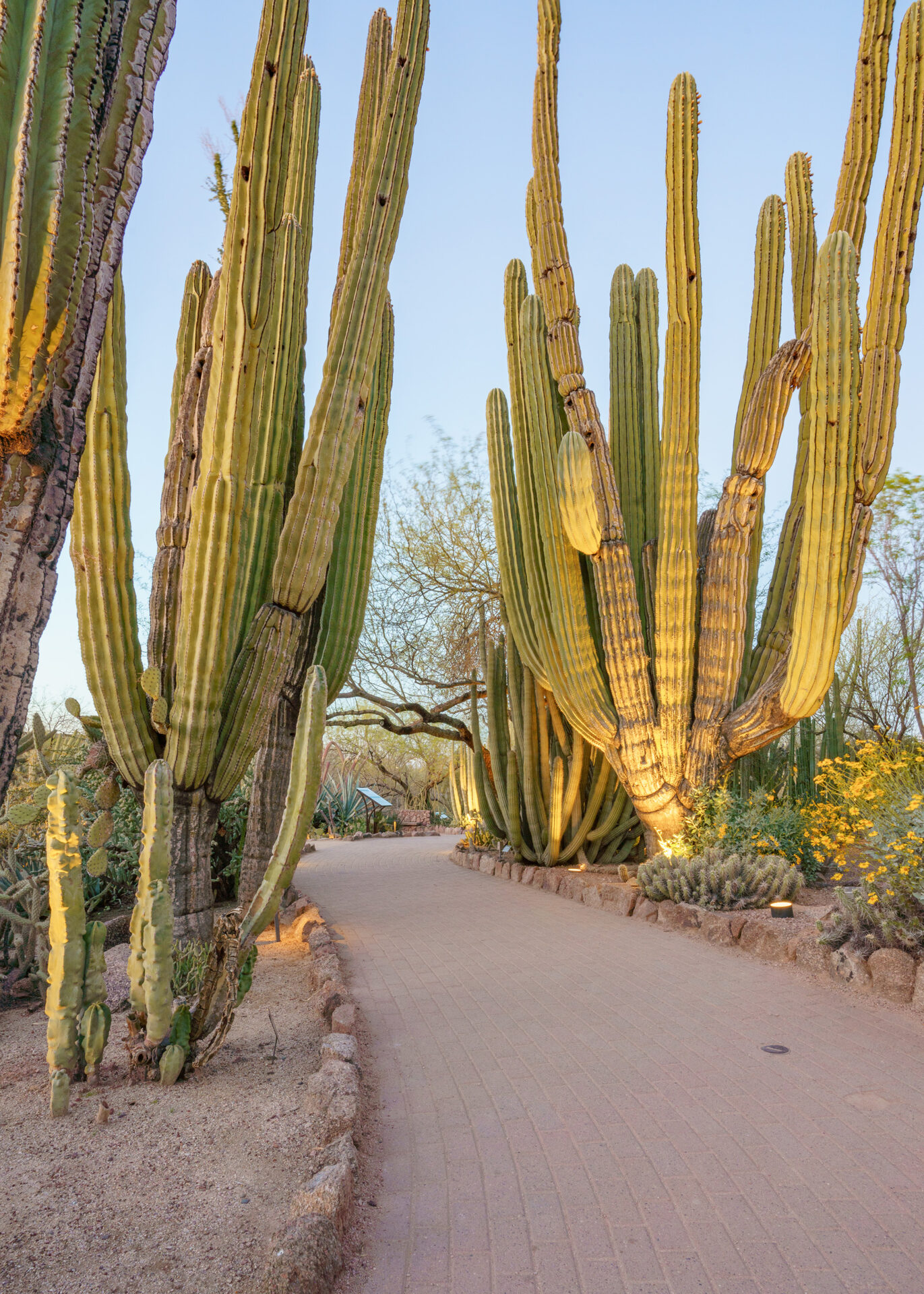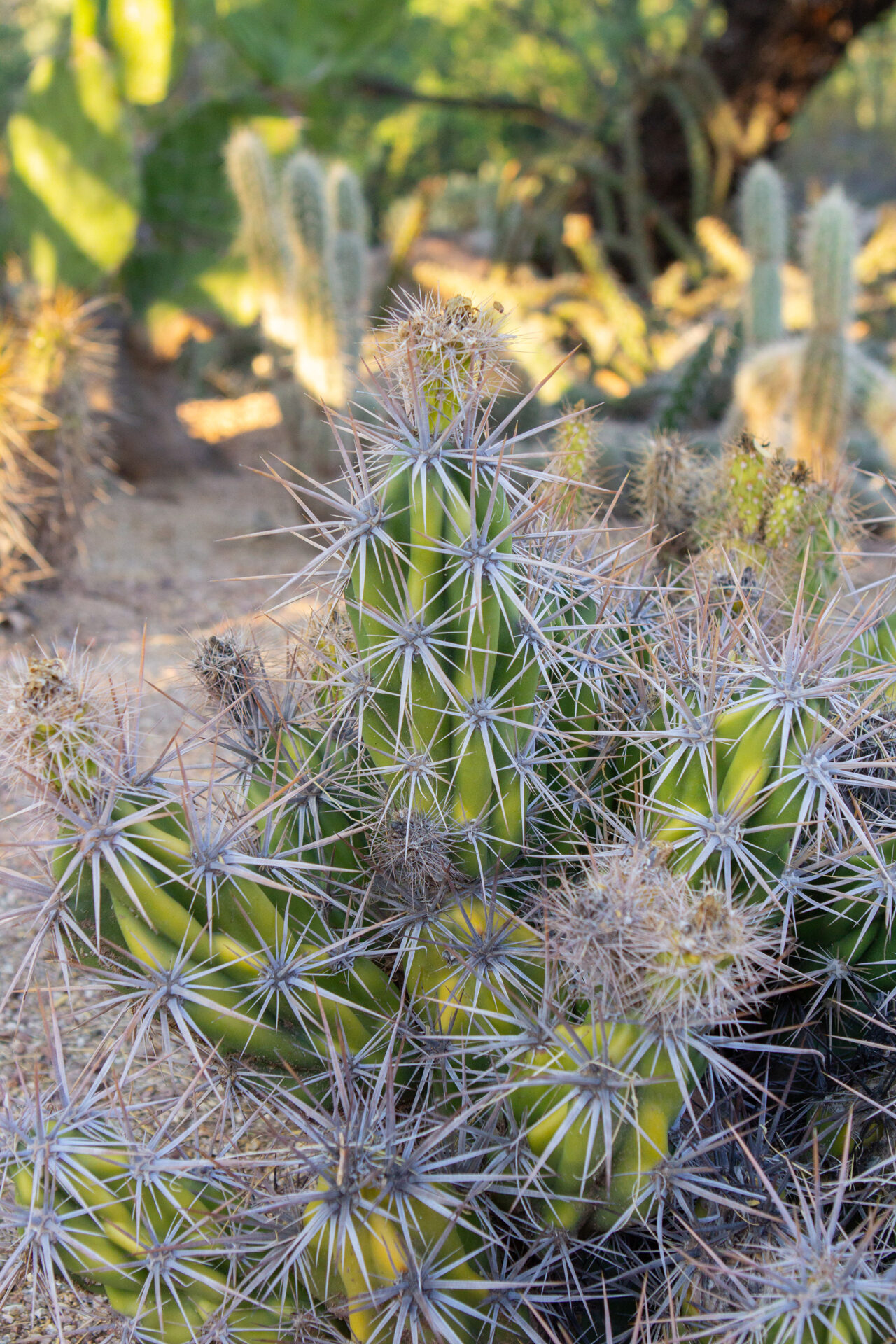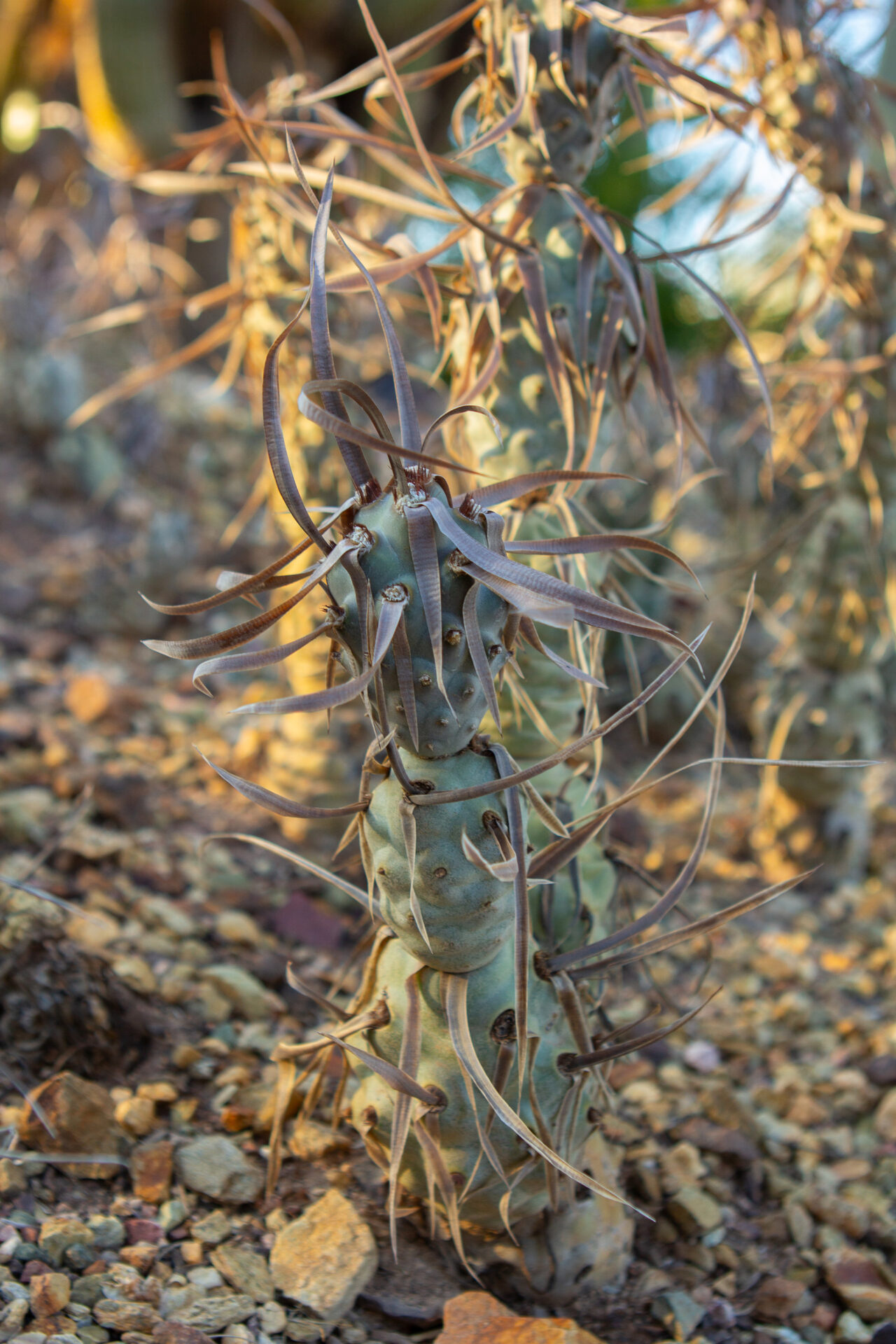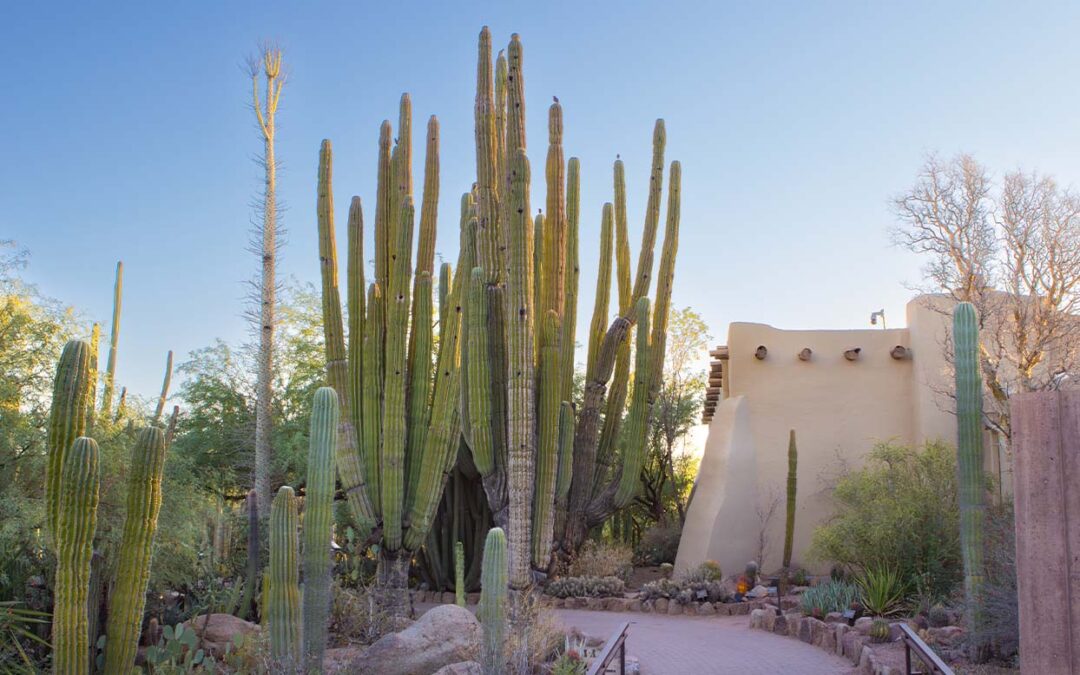What began as a dream to save and care for desert ecosystems outside the house of Gustaf Stark, a Swedish botanist in 1939 has now become a desert oasis for more than 50,000 plant species and hundreds of animals and pollinators.
All of the Garden’s achievements have been made possible through the collaboration of people who share the love toward the Sonoran Desert. Meet three plants, also celebrating 85 years on the Garden’s trails. If only these plants could talk, it would be great to hear the many visitor memories they have seen and experience what they have witnessed when people with big dreams come together and the wonderful things that have happen.

Cardon
Pachycereus pringlei
The cardon cactus (Pachycereus pringlei) stands as the world’s largest cactus, soaring to impressive heights of up to 70 feet. As you stroll towards Webster Auditorium, you’ll encounter a pair of these towering specimens who have witnessed the 85 years of the Garden’s history but they are a few years older since they were planted with a few years of age.
The cardon hails from the arid landscapes of Sonora and Baja California, Mexico, and they earn their name in honor of Cyrus Pringle, the American botanist who brought them into the botanical spotlight. Also known as “elephant cactus” in Mexico, their sheer size can rival that of an African elephant, with some weighing in at a whopping 25 tons, surpassing the average African elephant’s weight of five to six tons.
What’s truly intriguing is the way these cactus manage their towering stature with relatively shallow roots. Their secret lies in the expansive reach of their roots, efficiently capturing the scarce soil moisture. When sporadic rain falls in the desert, these cardon cactus quickly absorb and store water, equipping them to endure extended periods of drought.
From an ecological standpoint, the cardon cactus takes center stage as a keystone species in desert ecosystems, providing essential shade and shelter and offering refuge to a diverse array of desert inhabitants, including birds, bats and insects. Moreover, the nectar and fruits of the cardon cactus are lifelines for many desert creatures, forming a vital component of their diet.
Beyond its ecological significance, this cactus carries cultural weight among indigenous communities in the region, and have utilized its resilient wood to construct home and craft essential tools.

Dagger Cholla
Grusonia invicta
Discover Grusonia invicta, an enchanting plant that, at the age of 85, continues to radiate splendor. Native to the arid landscapes of the southwestern United States and northwestern Mexico, this captivating specimen found its way into our garden’s collection back in 1939 and keeps beautifying the Garden’s trails with its presence.
Grusonia invicta, also known as dagger cholla, is a resilient succulent that has captured the attention of botanists and desert enthusiasts alike. At a first glance, Grusonia invicta may appear inconspicuous, blending seamlessly with the rocky terrain of its native habitat but if you look closer you might be delighted to find striking pink-red spines covering the top of this fascinating cactus, colored spines are rare and only a small percentage of cactus species display this characteristic. The spiny armor provides protection against herbivores, while its water-storing capabilities enable it to thrive during extended periods of drought.
One of its most captivating features of Grusonia invicta is the large yellow flowers that bloom seasonally, attracting a variety of pollinators. Bees, in particular, are known to thoroughly immerse themselves in these blossoms while gathering pollen and collecting nectar.

Paper Spine Cactus
Tephrocactus articulatus
The paper spine cactus (Tephrocactus articulatus) has been a cherished presence in the Garden since 1939, and can be found throught the Garden. Native to South America, this member of the cactus family is celebrated for its unique characteristics and remarkable adaptability.
This artistic cactus elegantly ascends with graceful, pine cone-like segments, which can attain heights of up to 12 inches. Its stems are adorned in a spectrum of silver, glaucous, or verdant shades, dressed with delicate, paper-like spines similar to raffia fibers.
One of the most remarkable adaptations of the paper spine cactus is its ability to shed segments during periods of drought, conserving water while sustaining growth. This showcases its extraordinary resilience and nature’s ability to thrive in the most challenging environments, such as the lower slopes of the Andes mountains.
And if this weren’t enough, the roots of this cactus also play a crucial role in stabilizing the soil, thus preventing erosion in its environment. In doing so, it makes a significant contribution to preserving the ecological integrity of its natural habitat, unquestionably establishing itself as an exemplary member of the cactus family.
When you next visit the Garden again, be sure to visit this beautiful Argentinian friend, who has witnessed 85 years of growth and hope.
